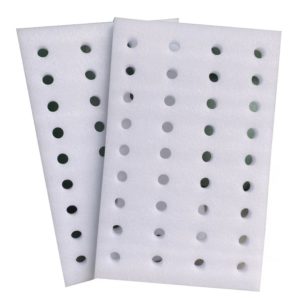Description
Application of microorganisms in aquaculture
1. Water quality is stable, mainly ammonia, nitric acid
2. Vibrio suppression in water
3. Organic decomposition of silt at the bottom of the pond
4. Coordinate with fertilizer to establish aquaculture water color
5. Break down bait and feed to improve absorption
6. Improving the gut boosts immunity, improving fecal contamination of water quality
A. Spores:
1. Water quality stability: In the aquaculture environment, the water body has organic substances such as residual bait, dung and harmful substances suchas ammonia, and spore microorganisms can secrete extracellular enzymes to break down organic matter, use metabolic activities to convert ammonia and improve water quality through nitrification.
2. Vibrio suppression: Bacillus microorganisms can compete with vibrio for nutrient resources such as carbon and nitrogen sources, limit its reproduction, and secrete antibacterial substances to destroy vibrio cell structure and affect its physiological function, thereby inhibiting vibrio growth and reducing the risk of illness from vibrio infection in aquatic animals.
3. Subsoil improvement: Sporadic microorganisms can break down aquaculture subsoil organic matter and secrete extracellular enzymes to convert it. It can improve the bottom mud structure, also release nutrient elements, and promote the benign cycle of aquaculture water bodies.
4. Establishing water color: Bacteriological microorganisms can break down organic matter such as residues and manure in water, reduce molecularization of fertilizer nutrients, and provide nutrients for algae growth; At the same time, its metabolic activity can regulate the microecology of the water body, promote beneficial algae reproduction, and cause the water body to exhibit suitable color, achieving the effect of establishing a good water color.
5. Improving feed absorption: Bacillus microorganisms can improve feed utilization, the principle is that they can colonize the animal’s gut, secrete a variety of digestive enzymes, and in concert with the animal’ own digestive zyme, fully break down the complex nutrients in the feed into small molecular substances, which are more easily absorbed, thereby improving utilization rate.
6. Enhance immunity: The spore microbe interacts with the immune system of aquatic animals to stimulate the development of immune tissues, regulate the immune response and promote the growth of aquatic animals.
